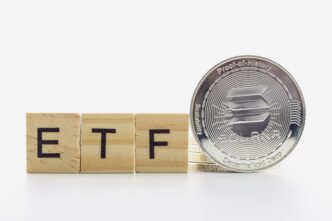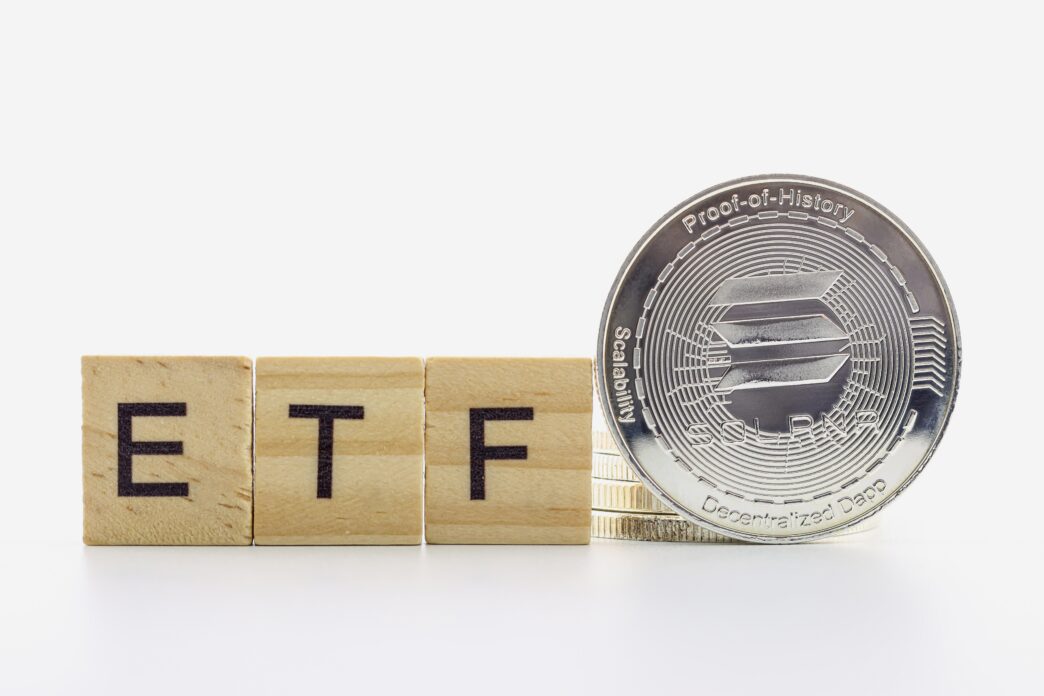Executive Summary
The Story So Far
Why This Matters
Who Thinks What?
The U.S. cryptocurrency market is expanding its exchange-traded fund (ETF) offerings beyond Bitcoin and Ethereum, with asset managers launching and filing for spot Solana (SOL) ETFs. Notably, REX-Osprey initiated the first U.S. spot Solana ETF with staking rewards in July 2025, while Bitwise Asset Management also launched a spot Solana ETF (BSOL) that includes built-in staking. These developments aim to provide investors with regulated and accessible exposure to Solana’s price movements and potential staking yields without direct cryptocurrency ownership.
Understanding Solana Spot ETFs
A Solana Spot ETF is an investment vehicle designed to track the real-time market price of Solana’s native token, SOL. Unlike direct cryptocurrency purchases, these ETFs hold SOL tokens as their primary asset, with shares traded on traditional stock exchanges through standard brokerage accounts.
Professional custodians manage and securely store the underlying SOL tokens, mitigating risks associated with personal crypto storage, such as lost keys or hacks. This structure simplifies investment, making it accessible to a broader range of investors, including those unfamiliar with crypto exchanges or digital wallet management.
Spot vs. Staking ETFs
The key distinction lies in the inclusion of staking. A standard spot Solana ETF provides direct price exposure to SOL without participating in the network’s staking mechanism. Conversely, a staking ETF actively engages in the staking process, generating additional yield from rewards that can be passed on to investors, typically after fees.
Staking ETFs are inherently more complex due to the management of staking operations and reward distribution, and they face stricter regulatory scrutiny, particularly in the U.S.
Regulatory Landscape and SEC Approval
The journey for spot Solana ETFs through the U.S. regulatory environment has seen significant shifts. Institutional interest surged in 2024 with initial filings from major asset managers, many of whom had previously filed for Bitcoin and Ethereum ETFs.
A pivotal development occurred in September 2025 when the SEC adopted generic ETF listing standards, which market analysts believe have substantially increased the probability of approval for such products. Following these regulatory changes, Bloomberg analysts reportedly raised their predicted odds for approval to 100%.
Staking Provisions and Implications
While staking is a core feature of the Solana network, its inclusion in ETFs presents unique regulatory challenges for the SEC, which often views staking rewards as potential investment returns. Consequently, SEC rules may necessitate ETF issuers to exclude staking from fund activities or impose limitations on how rewards are managed and disclosed.
This cautious regulatory approach prioritizes investor protection and transparency, potentially impacting expected yields and fund performance compared to direct SOL holdings. ETF sponsors are required to clearly outline all staking-related risks.
Market Impact and Investor Considerations
The introduction of a spot Solana ETF provides new investment avenues for both institutional and retail investors, potentially influencing SOL prices, market accessibility, and the broader development of crypto and DeFi financial products.
Benefits for Institutional Investors
Institutional investors operate under stringent compliance requirements, often necessitating regulated, liquid, and easily accessible assets. A spot Solana ETF fulfills these criteria, enabling funds to gain Solana exposure without the complexities of direct token acquisition and management. ETFs facilitate trading during conventional market hours on established exchanges, offering institutions greater flexibility in managing crypto allocations and risks. This increased liquidity can also contribute to more efficient price discovery for the underlying SOL token.
Implications for DeFi and Broader Crypto Markets
Solana’s high transaction speeds and low costs are fundamental to many decentralized finance (DeFi) applications. An influx of capital into SOL via ETFs could bolster the growth of DeFi projects within the Solana ecosystem. Furthermore, the approval of Solana ETFs may establish a precedent for future ETFs based on other crypto assets, diversifying the crypto ETF market and widening mainstream investor access.
However, increased ETF inflows do not guarantee price appreciation, especially if the broader cryptocurrency market faces adverse conditions.
Comparison with Bitcoin and Ethereum ETFs
Bitcoin and Ethereum ETFs paved the way for regulated crypto investments, simplifying access for institutions and individual investors. Solana ETFs share these benefits but focus on a blockchain renowned for faster transaction speeds and lower fees. Unlike Bitcoin, Solana is heavily utilized in DeFi, NFTs, and Web3 applications. While Bitcoin and Ethereum maintain higher recognition and liquidity, the emergence of Solana ETFs offers investors greater choice and signals a maturing crypto ETF market.
Unique Features and Risks of Solana Spot ETFs
Solana spot ETFs offer a streamlined approach to SOL price exposure but come with distinct opportunities and risks.
Staking and Yield Opportunities
Some Solana spot ETFs may incorporate staking, allowing the fund to participate in the Solana network and earn staking rewards. These rewards can potentially offset fund expenses or enhance shareholder returns. However, not all ETFs will include staking, and policies may vary among issuers. Investors must carefully review whether staking rewards are passed through, retained by the manager, or used to cover fees. Staking also carries risks, such as potential lock-up periods for staked SOL or penalties for validator misbehavior, which funds must manage and disclose.
Liquidity and Custody Risks
While Solana spot ETFs provide ease of trading on stock exchanges, their liquidity can fluctuate. During periods of high market demand, ETF shares may trade at a premium or discount relative to the net asset value of the underlying SOL. Trading volumes for SOL-based ETFs might not always match the liquidity of larger crypto ETFs like those for Bitcoin, potentially leading to wider bid-ask spreads and challenges for large investors. Custody remains a critical concern, with professional custodians typically employed, though risks like theft, technical failures, or hacks persist. Robust procedures and insurance are essential safeguards.
Issuer Strategies and Fee Structures
Issuers such as VanEck, Bitwise, 21Shares, and REX-Osprey compete through varying fee structures, decisions on asset staking, and reward distribution methods. Competitive fees, like VanEck’s reported 0.3%, can attract investors. Some issuers might use staking rewards to offset expenses, while others may pass more yield to investors or retain it as revenue. Investors should meticulously compare expense ratios, reward-sharing policies, and any additional services offered by each fund.
Key Takeaways
The advent of spot Solana ETFs marks a significant step in mainstream crypto adoption, offering regulated and simplified access to the SOL ecosystem. With the first U.S. offerings now available and regulatory landscapes evolving, these ETFs provide new avenues for diversification and institutional participation. However, investors must consider the inherent volatility of Solana, the complexities of staking provisions, and the specific fee structures and risks associated with each fund.







